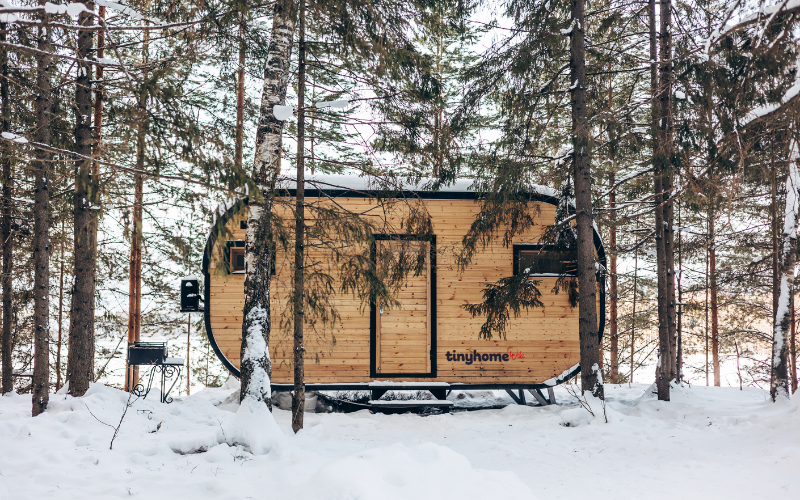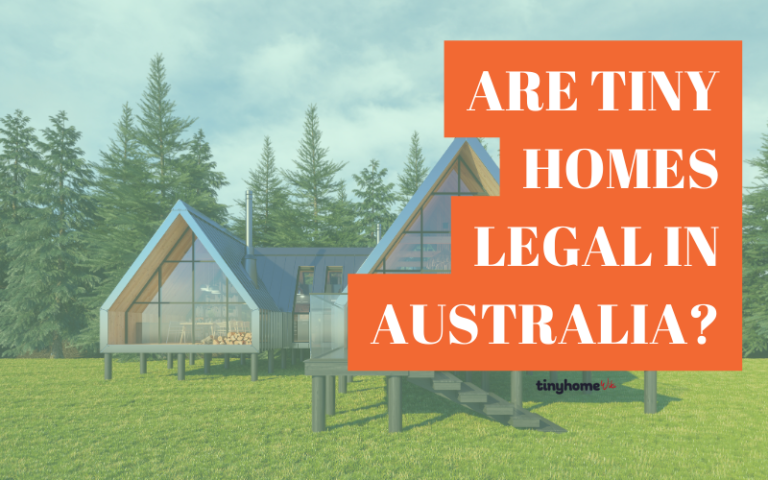What are tiny homes, and are they legal in the United States?
Tiny homes have become a popular alternative to traditional homes in the United States.
These small, portable homes are typically less than 500 square feet and offer a simpler, more affordable way of living.
However, with the rise of tiny homes, many people wonder about their legality in the United States.
The answer to whether tiny homes are legal in the United States is not a simple one.
While tiny homes are legal in most states, some specific laws and regulations vary from state to state and even within cities.
It is important for anyone looking to purchase or build a tiny home to research their local laws and regulations to ensure they comply.
What Are Tiny Homes

Definition
Tiny homes are small, compact living spaces, typically 400 square feet or less.
They are designed to maximize space and minimize the material and energy needed to build and maintain a home.
Tiny homes can be built on a foundation or wheels, which makes them mobile and allows for flexibility in terms of where they can be located.
History
The tiny house movement began in the late 1990s and early 2000s, responding to the growing trend of larger, more expensive homes.
The movement was fueled by a desire to simplify life, reduce environmental impact, and live sustainably.
Tiny homes gained popularity during the Great Recession as people sought affordable housing options.
Benefits
There are many benefits to living in a tiny home. One of the most significant benefits is affordability.
Tiny homes are much less expensive to build and maintain than traditional homes, which makes them an attractive option for people on a budget.
They are also more sustainable, requiring fewer resources to build and maintain.
Tiny homes can be located in various settings, allowing for greater flexibility and freedom.
Challenges
While there are many benefits to living in a tiny home, there are also some challenges.
One of the biggest challenges is finding a place to park or place your tiny home.
Zoning laws and building codes can make finding a legal place to park your tiny home difficult.
Living in a tiny home also requires significant downsizing and simplification, which can be challenging for some people.
Overall, tiny homes offer a unique and attractive housing option for people looking for affordability, sustainability, and flexibility.
While some challenges are associated with living in a tiny home, the benefits often outweigh the drawbacks.
Tiny Homes Legality in the United States

Tiny homes have become increasingly popular in the United States due to their affordability and mobility.
However, their legality is complex and varies by federal, state, and city regulations.
This section will explore the legality of tiny homes in the United States.
Federal Regulations
There are currently no federal regulations specifically addressing tiny homes.
However, the International Code Council (ICC) has released a model code that includes standards for tiny homes on a foundation.
This code has been adopted by some states and cities as their own building code.
Additionally, the Department of Housing and Urban Development (HUD) has issued guidelines for manufactured homes, which could apply to tiny homes on wheels if they meet certain criteria.
However, these guidelines are not specifically tailored to tiny homes.
State Regulations
Each state has its own regulations regarding tiny homes. Some states, such as California and Colorado, have adopted the ICC’s model code for tiny homes on a foundation.
Other states, such as Oregon and Texas, have created their own regulations for tiny homes.
It is important to note that some states have minimum size requirements for homes, which could make it difficult to legally live in a tiny home. For example, in Florida, a dwelling must be at least 400 square feet.
City Regulations
Cities and counties also have their own regulations regarding tiny homes. Some cities, such as Portland, Oregon, have created tiny home-specific zoning codes.
Others have allowed tiny homes in certain areas as accessory dwelling units (ADUs).
Researching the specific regulations in the city or county where you plan to live in a tiny home is important.
Some cities may require a permit for a tiny home, while others may not.
In conclusion, the legality of tiny homes in the United States is a complex issue that varies by federal, state, and city regulations.
Researching and understanding your area’s regulations before purchasing or building a tiny home is important.
Tiny Homes and Zoning Laws
Tiny homes are compact, minimalist dwellings that have become increasingly popular recently.
However, their legality in the United States is a complex issue that varies from state to state and even from city to city.
One of the main challenges facing tiny homeowners is zoning laws. Zoning laws govern land use and development within a particular area.
They dictate what types of structures can be built, where they can be built, and how they can be used.
The zoning laws that apply to tiny homes depend on several factors, including the size of the home, its location, and whether it is on wheels or a foundation.
In some states and cities, tiny homes on wheels (THOWs) are considered recreational vehicles and are subject to different regulations than traditional homes.
For example, in Oregon, there are no minimum square footage requirements for homes on foundations, making it relatively easy to own a tiny home.
However, a single-family home in Durham, North Carolina must be at least 400 square feet, bigger than a traditional tiny home.
It is important for anyone considering a tiny home to research the zoning laws in their area and to consult with local officials to ensure that they comply.
Some cities and states have begun to relax their zoning laws to accommodate the growing demand for tiny homes, but these changes are not yet universal.
In addition to zoning laws, tiny homeowners must also consider building codes and safety standards.
These regulations vary from state to state and can be complex, so working with a qualified builder familiar with the local codes and requirements is important.
Overall, while tiny homes offer a unique and affordable housing option, they are not without their legal challenges.
It is important for anyone considering a tiny home to do their research and to consult with local officials and experts to ensure that they comply with all relevant laws and regulations.
Tiny Homes Building Codes
No specific regulations apply to all US states regarding building codes for tiny homes.
Building codes are set at the local level, which means that the requirements for building a tiny home can vary widely from one place to another.
However, some general guidelines can be followed when building a tiny home.
For example, the National Fire Protection Association (NFPA) has developed a paper titled “Applying Building Codes to Tiny Homes” to assist in understanding the expectations of code enforcement practices on the construction or setting-in-place of tiny homes.
The NFPA paper recommends that tiny homes be built to the same standards as traditional homes, including compliance with the International Residential Code (IRC) or other adopted building codes.
Adopted building codes might apply to tiny homes within the scope of the adopted building code.
One of the main challenges with building a tiny home is meeting the minimum square footage requirements set by local zoning ordinances.
Many zoning regulations will require a house to be more than a set minimum of square feet, making it difficult to build a tiny home.
However, sometimes, an exception to a zoning ordinance can be granted.
For example, a variance can be granted to allow a tiny home to be built for a caregiver or a family member.
It’s important to note that building codes and zoning ordinances can change over time, and it’s essential to keep up-to-date with the latest regulations in your area.
Building a tiny home that doesn’t meet local building codes or zoning ordinances can result in fines, penalties, and even the demolition of the home.
Therefore, working with a licensed contractor or architect familiar with local building codes and zoning requirements is crucial when building a tiny home.
Conclusion
In conclusion, tiny homes are a unique housing option that has gained popularity recently due to their affordability and environmental friendliness.
However, navigating the legal landscape of tiny homes can be challenging and requires careful research.
While tiny homes are legal in all 50 U.S. states, each state has its own laws governing their use and placement.
Zoning laws are often a major obstacle for tiny homeowners, as minimum square footage requirements in residential zones can be well above the size of a tiny home.
Cities respond to this in various ways, with some allowing tiny homes in certain areas and others creating new zoning regulations specifically for tiny homes.
It is important for potential tiny homeowners to do their due diligence and research the laws and regulations in their area before purchasing or building a tiny home.
This includes researching building codes, zoning regulations, and any permits or licenses required for living in a tiny home.
While there are legal challenges to owning and living in a tiny home, it is possible to do so legally with the right research and preparation.
As the tiny home movement continues to grow, more cities and states will likely create regulations specifically for tiny homes, making it easier for individuals to live in these unique and affordable homes.






